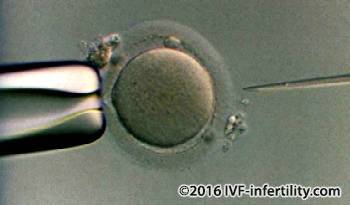The ICSI procedure
The early stages of ICSI are the same as for standard IVF. The woman takes fertility drugs to stimulate her ovaries with the aim to grow several mature follicles. The eggs are usually collected by vaginal ultrasound scan into a specially prepared culture medium. Once the eggs are collected, they are examined under the microscope to assess their quality. The eggs are then placed in the incubator for a period of time usually between 3-6 hours. Thereafter the eggs are removed from the incubator and the cells that surround the egg are stripped off to assess the maturity of the egg, because ICSI can only be performed on mature eggs. Immature eggs can be kept in the culture medium and injected the following day if they show signs of maturation.
Sperm collection from ejaculate or aspirate from the epididymis (PESA) or testis (TESA or TESE) is prepared using special cultured medium. Sperm preparation may also be obtained from frozen semen sample or testicular tissues.
Once the eggs have been selected, a chosen sperm is rendered immotile, then sucked into the tip of a very fine glass needle and injected directly into the egg. The egg is held in place by gentle suction on the opposite side using a holding pipette. This is a very delicate procedure and involves using a micromanipulator. This process is repeated for each egg. The elastic nature of the egg membrane means that the tiny hole made by the needle closes very quickly. About 5% of the injected eggs may be damage by the procedure.

The eggs are examined the next morning for signs of fertilization. The developing embryos are allowed to grow and cleave (divide) for a further 24-48 hours. Not all fertilized eggs will divide and some embryos may arrest (stop growing) at an early stage of development. Up to three embryos are transferred into the uterus in the United Kingdom. Any excess embryos of suitable quality are then frozen for later transfer.
Luteal phase support is recommended as with IVF treatment.